Posted on: August 19, 2014 |  | 中文
| 中文
The Sanxingdui Museum is near an archaeological site that dates back to the Neolithic, Shang, and Zhou periods. In 1988, the site was listed as a National Key Cultural Relics Protected Unit, due to its size, quantity of unearthed items, and the rarity and value of its excavated objects.
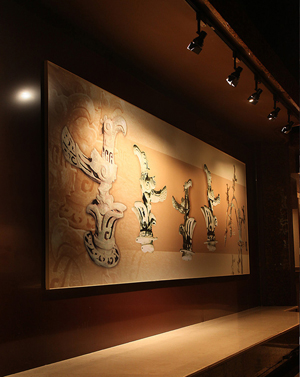 |
The site is situated to the North of Nanxing Town of Guanghan City in Sichuan Province. It is mainly located on the higher land between the Yazi River and the Mamu River, covering an area of about 12 square kilometers. The most compact parts of the site are in the territory of the towns of Sanxing, Rensheng, Zhenwu, and Huilong.
The artifacts from Sanxingdui had global influences. In 1986, two large Shang-period sacrificial pits were unearthed with more than one thousand gold, bronze, and jade objects, astonishing the entire country and attracting the attention of the world as well. Among other things, the finds proved that Sanxingdui area was the capital area of the ancient Shu Kingdom more than 3,000 years ago. Of all the objects excavated at Sanxingdui, the bronzes are the most fabulous and strange, with their high degree of historical, artistic and scientific values.
The following is a brief of the findings at Sanxingdui site:
Ceramics: Most of the ceramics unearthed at Sanxingdui are made of "jiashahe" clay, which had sand in it, and are made on a wheel. There are known to be four periods of the ceramics. The first period was from some 4,000 to 4,800 years ago, in a representative Neolithic culture period in the Sichuan Basin. The second is roughly in the time from the Xia Dynasty to the early Shang Dynasty (about 4,000-3,000 years ago). The third is contemporary with the time of the late Shang Dynasty (2,500-2,000 years ago), and the fourth between the late Shang Dynasty and the early Western Zhou dynasty (2,000-1,200). It can be concluded that the above ceramics unearthed there represent an unbroken line of development in the ancient Shu culture from the shape, patterning, base, and method of manufacture.
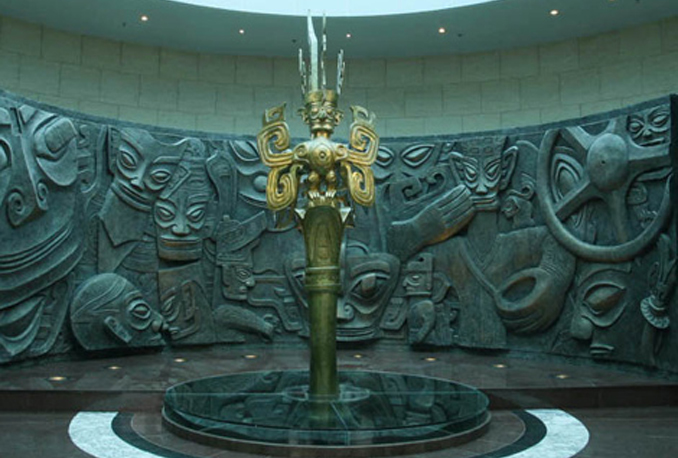 |
Jade: Although not many in number, the jade items were also unearthed at the site. The techniques used to make these jade objects are fairly advanced and they are well preserved. Among them are ceremonial objects, military objects and tools, with the blades still as sharp as when they were buried. The blades of these objects are so thin that they seem to be ceremonial in nature and not for actual work or warfare.
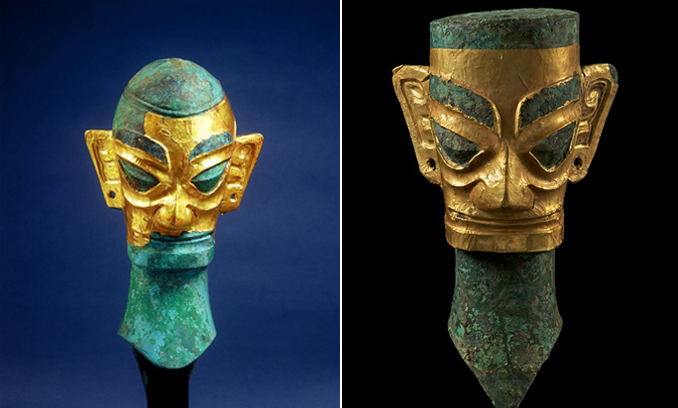 |
Gold objects: The gold objects excavated from Sanxingdui were not only very finely made but also quite unique in style and shape. There are face masks and various kinds of ceremonial items. Among them, a gold staff, with a human head carved on top with fish, birds, and grain, is executed in a fine manner with an extremely beautiful pattern.
Bronze objects: The Sanxingdui bronze objects have been exhibited both in and outside China for many times and have astonished the scholars of archaeology, art history and the public as well. They are the most well known from the Shang and Zhou periods ever unearthed, particularly bronze human statues, their artistic exaggeration, majestic style, unique design and shape.
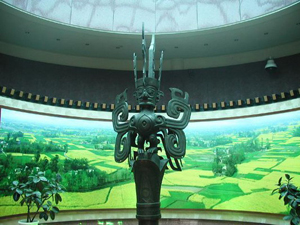 |
The unearthed Sanxingdui bronze objects can be divided roughly into two categories. All those belonging to the first category are mainly for use in ceremonies and rituals, ncluding "zun", (a kind of wine vessel used in ancient times), "fou", (a kind of container), "pan", (plate), "yi", (a kind of ancient wine vessel). This can clearly be seen from the shapes and artistic styles of these Bronze objects. It is believed that there are some similarities between the unearthed bronze objects and the environment of the surrounding regions. Another type of bronze objects were made for religious purpose with religious connotations, and they include religious statues, or idols. Among them is a statue of a standing man that is 2.62 meters high and weighing 180 kilograms. His nose is high and straight, his eyes are large, his forehead is square and he has large ears with pierced earlobes. A long braid hangs down behind its head; he wears a resplendent tall crown on his head. The body is covered with a dragon-and cloud-patterned robe that folds to the left; the left hand is raised, the right arm is folded across his chest. The hands are large, the two feet are bare and the statue stands on a square pedestal. Of all the bronze objects of the Shang and Zhou periods ever unearthed, the shape and style of this one are very rare and absolutely unique.
There are many bronze heads and face masks of the superlative bronze objects excavated at Sanxingdui site. Among them, one mask is 134 centimeters wide, 65 centimeters tall and weighs ten kilograms. If one estimates the full height of a statue with these proportions, it would be a magnificent four meters. The mask has large ears and high nose, and exaggerated eyes with protruding pupils.
The environment of the new museum is exceptionally beautiful. The surrounding space is large and the buildings are arranged as if they were in a park, with pools, stones, flowers and trees; the setting also borrows from the natural beauty of the nearby streams.
You may also like:
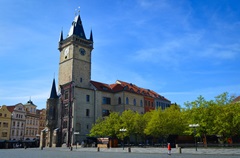
Centers of No Attention: Comparing Pakistan's City Centers with European Squares
(November 22, 2024)